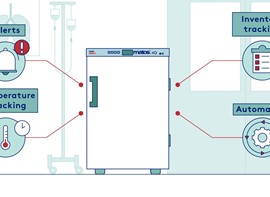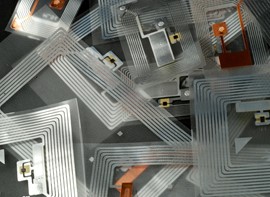Fridges operate best in a cool dry environment. When the ambient air is very hot and humid this can have a two-fold effect on the cooling performance of the fridge;
Firstly, the hot air will not be able to absorb thermal energy from the heat exchanger on the rear of the fridge as quickly. This causes the fridge to run much hotter and much longer, and can eventually cause the compressor to shut down due to thermal overloading.
Secondly, when the hot and humid air is introduced into the fridge chamber, it will immediately settle and condensate on the coolest surface. Inside the fridge this is the evaporator or “cooling” plate, where it will freeze and build up into large chunks of ice which the automatic defrost system may not be able to remove. If this ice builds up too much, the airflow within the fridge will be obstructed, and cooling performance will drastically decrease. This can cause both too hot and too cold temperatures within the fridge chamber (sometimes simultaneously.) This is also the reason for increase amount of condensation forming on glass door refrigerators as this is normally the coldest surface in the room.
To avoid performance or ice issues during this summer period, please follow the following operational suggestions for during times of extreme heat or humidity:
- Ensure the fridge is well ventilated; there should be adequate space for air to flow across the heat exchanger on the back of the fridge. If the fridge is located under a bench space, consider pulling the fridge further out that usual to help create additional room for air to flow. If more than two sides of the fridge have adequate spacing, the difference in temperature between the surrounding ambient air and the hot exhaust, will create a natural ventilating airflow.
- Keep the ambient environment temperature at a comfortable level, 18-22°C is the optimum operating temperature for refrigerators.
- Ensure door openings are kept as short as possible – When a fridge door is opened, the temperature difference between the warm ambient air and the cold chamber air will cause the cold air to be displaced. The longer the door is left open the more humid air will be introduced and the harder and longer the compressor will need to work for it to recover. Excessive or long door openings will cause a large ice build-up and can cause lasting damage (as well as cold chain breaches).
- Check for presence of ice often – To check for ice, place your hand up behind the cooling vent near the bottom of the fridge inside the chamber. You will be able to feel the bottom of the fridge’s cooling plate. If there is a large amount of ice present, please call Rollex Medical or perform a defrost ASAP. If there are small icicles or drips of water present instead, this is ok and means the defrost system is working satisfactorily. We recommend checking this weekly during the summer period.
- Ensure the room’s air conditioning is running at all times if possible – Air Conditioning by definition has a dehumidification effect. If a room is being air conditioned, fridge performance will be far greater due to the cool dry air available for removing the heat from the fridge’s cooling system.
Please note that the effects listed above will have a greater effect on freezers due to the larger difference in internal and external temperatures.
If you have any questions, please do not hesitate to contact your Rollex Medical Service Team via service@rollexmedical.com or call the team on 1300 880 441.




